Explore the Best AI Image Gallery

Beyond Reality: VR and ARs Transformative Impact on Gaming and the Creative Industry
The realms of gaming and creative expression are undergoing a profound metamorphosis, driven by the immersive power of Virtual Reality (VR) and Augmented Reality (AR). These technologies are not merely adding new layers to existing experiences; they are fundamentally reshaping how we create, interact with, and perceive digital worlds.
A New Canvas for Gaming:
VR gaming transports players into meticulously crafted virtual environments, allowing them to become active participants rather than passive observers. This level of immersion fosters a deeper connection with game narratives, characters, and challenges. Whether exploring fantastical landscapes in fantasy RPGs or engaging in high-stakes simulations, VR elevates the gaming experience to unprecedented heights.
AR, on the other hand, overlays digital elements onto the real world, enriching our perception of everyday surroundings. Imagine a city where historical landmarks come to life with holographic projections or a board game that seamlessly blends physical pieces with virtual characters and interactive elements. AR has the potential to transform mundane environments into captivating playgrounds for creativity and engagement.
The Creative Revolution:
VR and AR are empowering creators across diverse disciplines to explore new artistic frontiers. VR artists can sculpt three-dimensional worlds, design immersive installations, and craft interactive narratives that transcend traditional mediums. AR allows designers to showcase products in realistic virtual settings, architects to visualize building designs before construction, and educators to create engaging learning experiences that blend theory with hands-on exploration.
Furthermore, these technologies are democratizing creativity, providing accessible tools for individuals to express themselves without requiring extensive technical expertise.
Ethical Considerations:
As VR and AR become increasingly integrated into our lives, it is crucial to address the ethical implications that accompany this technological advancement. Issues such as data privacy, responsible content creation, and the potential for addiction require careful consideration and proactive solutions.
For instance, VR experiences often collect vast amounts of user data, raising concerns about how this information is used and protected. Developers have a responsibility to implement robust data security measures and ensure transparency in their data collection practices.
Content creators must also be mindful of the potential impact of VR and AR on users well-being. While these technologies offer immense creative possibilities, they can also induce feelings of disorientation, nausea, or even psychological distress. It is essential to design experiences that are safe, inclusive, and considerate of users mental health.
The Future Landscape:
The future of VR and AR in gaming and the creative industry is brimming with possibilities. Advancements in hardware technology, such as haptic feedback and brain-computer interfaces, will further enhance immersion and interactivity. The development of more sophisticated artificial intelligence will enable the creation of dynamic, adaptive experiences that respond to user actions and preferences.
We can anticipate the emergence of entirely new genres of games and creative applications, blurring the lines between the physical and digital realms. Collaborative VR and AR experiences will foster a sense of community and shared creativity, connecting individuals from around the world in unprecedented ways.
VR and AR are not merely technological advancements; they represent a paradigm shift in how we interact with the world around us. By embracing these innovations responsibly and ethically, we can unlock their transformative potential to reshape the creative landscape and redefine the boundaries of human imagination.

](https://images.ai-img.art/thumbnails/150/b1dfd1e276d319bc7f1b3a132da8960830406c7bf997edcaa8e84a72549b5ba4.webp)




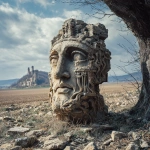


](https://images.ai-img.art/thumbnails/150/da27041d382a18620da87c26f8906f4bd058b0f97fddeac97c814c1a2c1697dd.webp)




](https://images.ai-img.art/thumbnails/150/6e8a3216fd7ecc40d3eb9ad0af56b618b8e64baead93e99d72be4415d6febb19.webp)
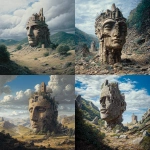
](https://images.ai-img.art/thumbnails/150/533316f23279ccc41f1c6cdc33bab703cca49f31e472cd42e9c9b2836695da60.webp)
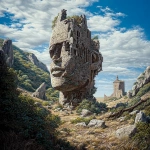

](https://images.ai-img.art/thumbnails/150/9b53a710c40e5620916d1d89ef4488c744a3f03e77438eef5e99222eb91ace7c.webp)
](https://images.ai-img.art/thumbnails/150/3257d17813bfa1c24f3fa74d44a4ecf485773a374d3b8759a30d23d087a0bd03.webp)




](https://images.ai-img.art/thumbnails/150/0ff19e66dcffaa9ebe43272f5894107cd75db678948d4111cafecbddf3028e25.webp)




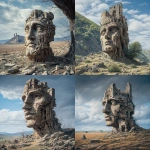
](https://images.ai-img.art/thumbnails/150/1db67956a0d084be696b5ee69f90fd0c2e3964e53bf69aaab3ec21c48c72a36c.webp)



](https://images.ai-img.art/thumbnails/150/0eb51efd63b8f1146f32c0cf1601bcd034a21d23ba004cd44aa6293dd0fcd06f.webp)
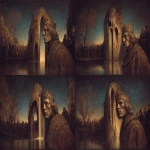





](https://images.ai-img.art/thumbnails/150/7e9b41fbb65a90134a2fd0e559a0109a3d9a10a0d23b6db763b78af62c6c959f.webp)






